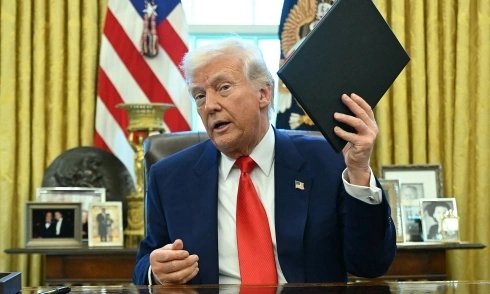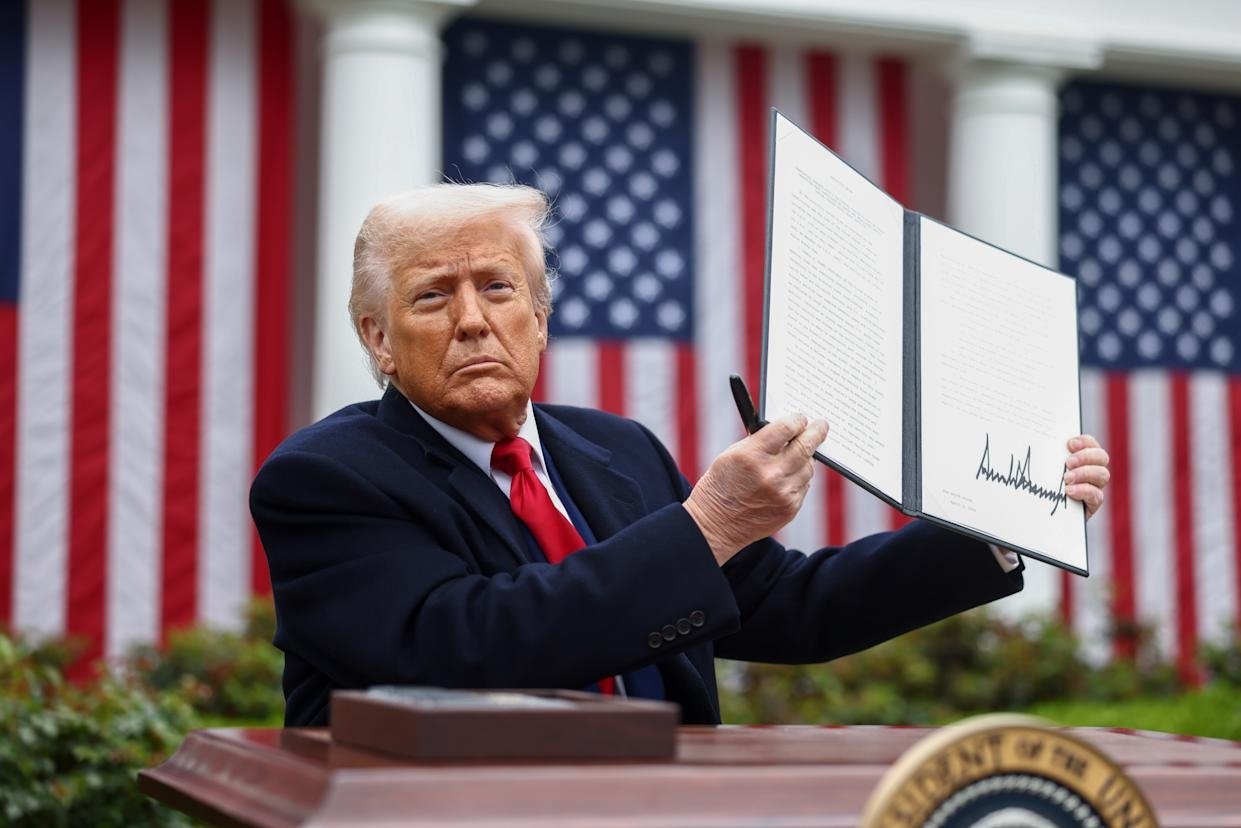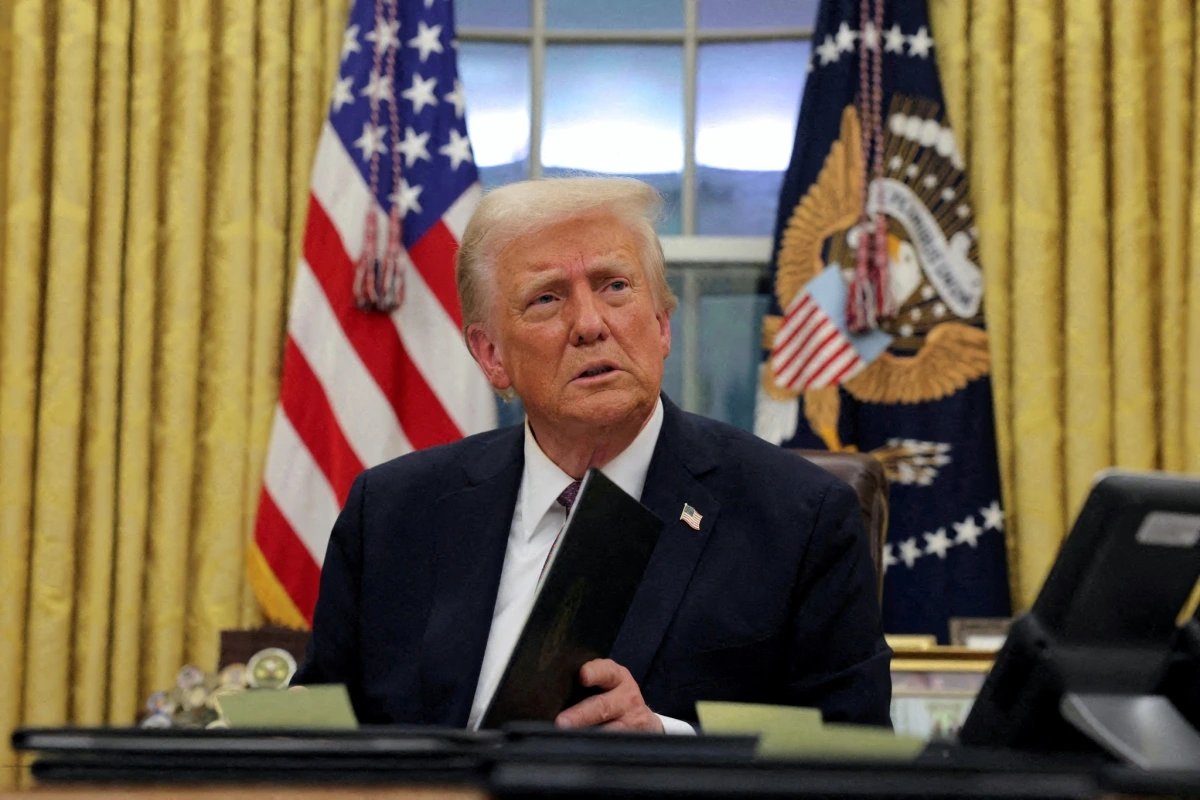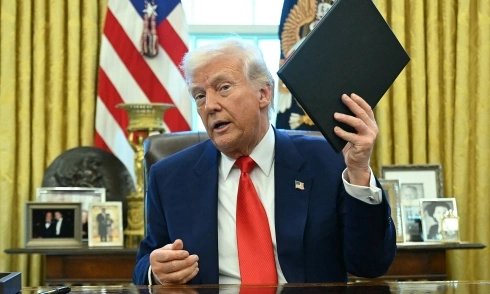In a surprising turn of events, former President Donald Trump has publicly acknowledged the economic costs associated with his administration’s aggressive tariff policies. This admission marks a significant shift in tone from his previous stance, where tariffs were presented as a foolproof tool to protect American industries and challenge unfair foreign trade practices, particularly with China. As the 2024 U.S. presidential election looms, Trump’s recognition of the downsides of tariffs has sparked debates across political and economic circles. Was this a strategic recalibration, a political maneuver, or a reluctant confession in the face of hard economic realities?
### The Origins of Trump’s Tariff Policy

When Trump first assumed office in 2017, one of his cornerstone policies was the implementation of tariffs aimed at reducing the U.S. trade deficit and reviving domestic manufacturing. Targeting countries like China, Canada, Mexico, and members of the European Union, the Trump administration levied tariffs on a wide array of goods including steel, aluminum, and over $350 billion worth of Chinese products.
The rationale behind these tariffs was grounded in economic nationalism. Trump promised to bring jobs back to America, protect domestic producers from foreign competition, and punish countries that he believed were exploiting the U.S. through unfair trade deals. His “America First” policy resonated with many working-class voters, especially in key industrial swing states like Pennsylvania, Michigan, and Ohio.
### Economic Impact of Tariffs: The Hard Numbers
Although the policy had political appeal, the economic consequences were quickly felt across several sectors. Studies from the Federal Reserve, the Peterson Institute for International Economics, and other independent organizations showed that the tariffs ultimately led to increased costs for American businesses and consumers.
The U.S. Chamber of Commerce estimated that American companies paid more than $80 billion in tariffs during Trump’s term. These costs were often passed down to consumers in the form of higher prices for everyday goods — from electronics and clothing to agricultural equipment. Moreover, retaliatory tariffs from trading partners affected American farmers, who saw a sharp decline in exports, especially soybeans and pork.
Supply chains were disrupted, investment uncertainty grew, and businesses faced increased costs in a climate of economic unpredictability. While some sectors, such as domestic steel and aluminum, saw temporary boosts, the broader economy showed signs of strain. Trump’s tariffs may have aimed to reduce dependence on China, but in doing so, they also raised input costs for American manufacturers, particularly small and medium enterprises.

### Trump’s Recent Admission: A Change in Tone
In recent public remarks, Trump acknowledged that the tariffs imposed during his administration had significant economic costs. Speaking at a campaign rally and in interviews with conservative media outlets, he admitted that while tariffs were a useful tool for negotiating better trade deals, they did “come with a price.” This is a notable departure from his previous insistence that foreign countries were the ones footing the bill for the tariffs.
His admission has triggered widespread analysis. Is this a signal of policy evolution, or is Trump simply attempting to reframe the narrative in preparation for a potential 2024 comeback? By conceding the cost, Trump may be attempting to appear more pragmatic and realistic, possibly to broaden his appeal beyond his loyal base.
### Political Strategy or Economic Realism?
Political analysts are divided on the implications of Trump’s admission. On one hand, acknowledging the costs of tariffs may help him counter criticism from economists and political opponents who have long warned about the negative impact of his trade war policies. On the other hand, this shift could be seen as a strategic move to rebrand his economic legacy in preparation for another White House run.
Some believe Trump is attempting to soften his image among business leaders and moderates who were alienated by the unpredictability of his trade policies. By presenting himself as someone who has learned from experience, he could be trying to re-enter the political scene with a more measured, statesman-like persona.
Others argue that this admission changes little. His core supporters are likely to view the tariffs as a necessary evil to protect American sovereignty and industry. In their eyes, any short-term pain was justified by the broader goal of economic independence and strength.
### Impact on 2024 Campaign Messaging

As Trump gears up for a potential return to the presidency, the way he frames his past economic decisions will be crucial. The 2024 race is likely to be dominated by economic issues, including inflation, interest rates, global supply chain realignments, and competition with China.
By acknowledging the cost of tariffs, Trump could position himself as a leader who takes bold actions but also reflects on their outcomes. This could appeal to undecided voters and centrists who are wary of extreme policies but open to strong leadership in times of uncertainty.
At the same time, Trump must be careful not to alienate his base, which admires his tough stance on trade and foreign policy. He will need to walk a fine line — admitting mistakes without appearing weak, and adjusting strategy without abandoning his “America First” principles.
### Global Reactions and Trade Implications
Trump’s comments have not gone unnoticed abroad. In Beijing, Brussels, and Ottawa, policy analysts and trade officials are closely watching the evolution of U.S. trade policy. If Trump were to return to the presidency with a more nuanced approach, global trade dynamics could shift dramatically.
Countries affected by the 2018–2019 trade wars are considering how to prepare for a potential second Trump term. Would he double down on tariffs, or pivot toward multilateral trade frameworks? Would the acknowledgment of tariff costs lead to more negotiation and compromise, or is it merely rhetorical?
Regardless of the outcome, Trump’s evolving trade rhetoric underscores the complexities of economic nationalism in a globalized world. Tariffs may serve as leverage, but they are not without domestic and international consequences.
### Lessons for Future Trade Policy

Trump’s acknowledgment offers a unique opportunity for bipartisan reflection on U.S. trade policy. It raises important questions: What tools should the U.S. use to protect its industries without hurting its consumers? How can trade policies be designed to balance national interests with global cooperation?
Both Democrats and Republicans can use this moment to assess the effectiveness of protectionist measures and explore alternatives, such as investing in domestic innovation, diversifying supply chains, and negotiating fairer trade deals without resorting to punitive tariffs.
The lesson is clear: while tariffs may generate headlines and offer political leverage, they must be deployed with caution and a clear understanding of their economic implications.
### Trump’s Legacy on Trade: A Mixed Bag
Trump’s legacy on trade remains controversial. To his supporters, he was the first president in decades to take a tough stand against countries like China, forcing them to the negotiating table and challenging long-standing trade imbalances. To his critics, he disrupted global markets, harmed U.S. consumers, and strained relations with key allies.
His recent admission does not erase the damage felt by certain sectors, nor does it invalidate the goals of his policies. What it does is open the door for a more balanced and data-driven debate on the future of American trade policy.
### Conclusion: A Moment of Clarity or a Tactical Shift?
Trump’s acknowledgment of the costs of tariffs could be interpreted in many ways — as a rare moment of economic clarity, a calculated political move, or both. Regardless of the motivation, the admission adds a new layer to the ongoing discussion about the role of tariffs in shaping national economic strategy.
As America approaches another crucial election cycle, voters will be asked to weigh not just promises, but past performance and the ability to adapt to changing realities. In that context, Trump’s statement may serve as a pivotal moment — one that forces both policymakers and the public to reconsider how best to protect American interests in an interconnected world.
